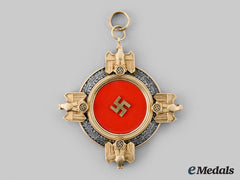
LOADING ...
In response to evolving domestic opinion, eMedals Inc has made the conscious decision to remove the presentation of German Third Reich historical artifacts from our online catalogue. For three decades, eMedals Inc has made an effort to preserve history in all its forms. As historians and researchers, we have managed sensitive articles and materials with the greatest of care and respect for their past and present social context. We acknowledge the growing sentiments put forth by the Canadian public and have taken proactive actions to address this opinion.
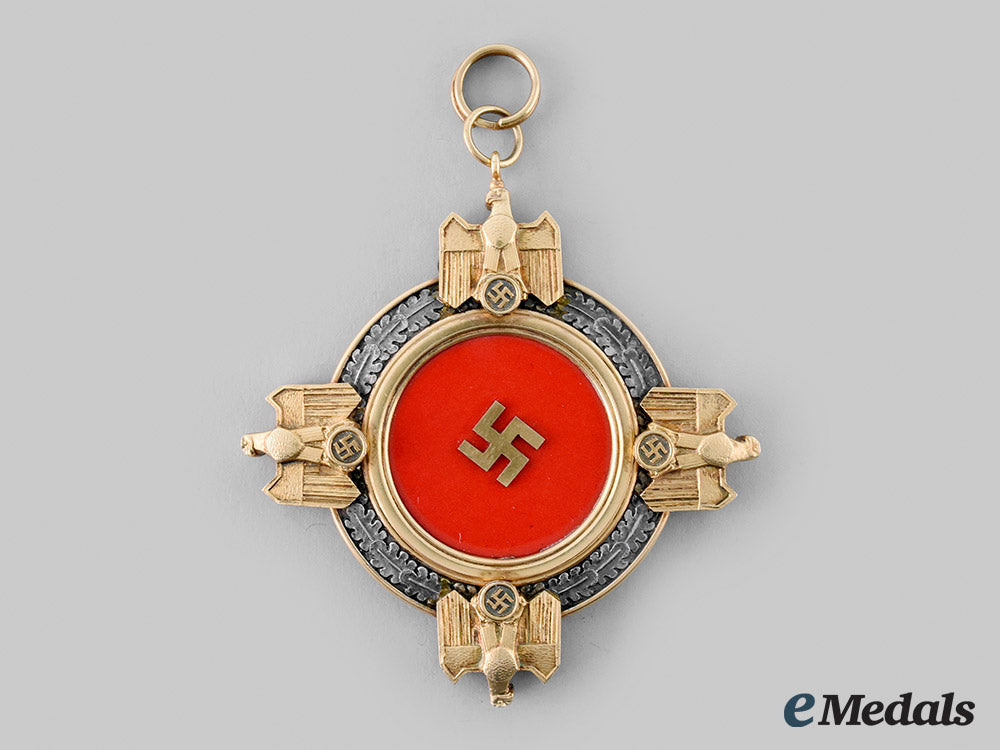
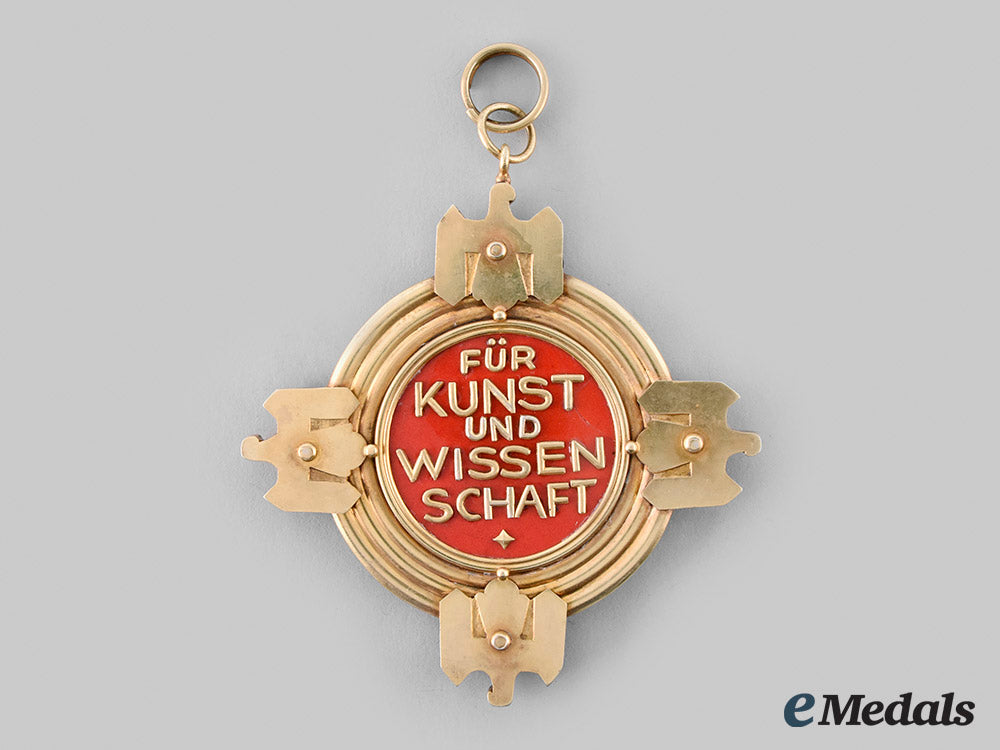
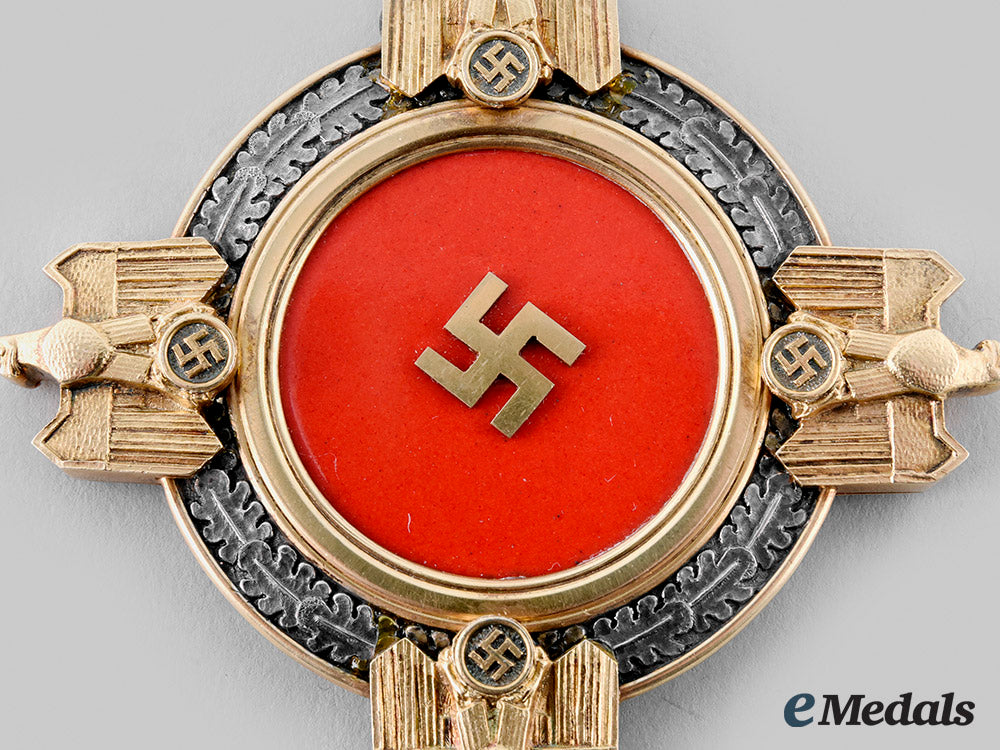
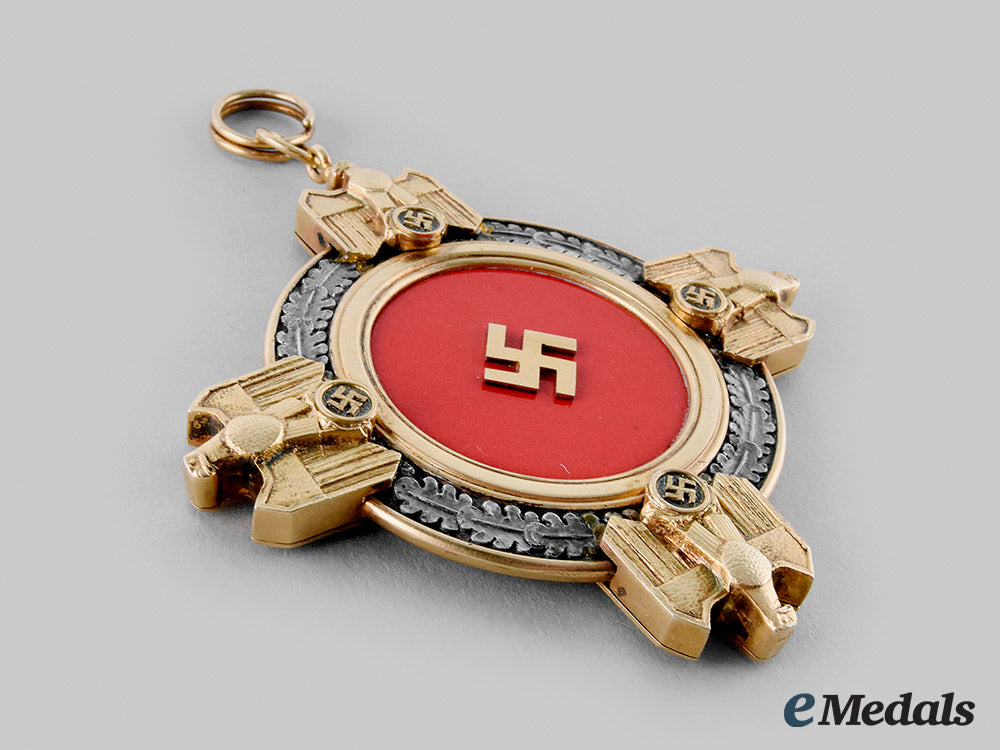
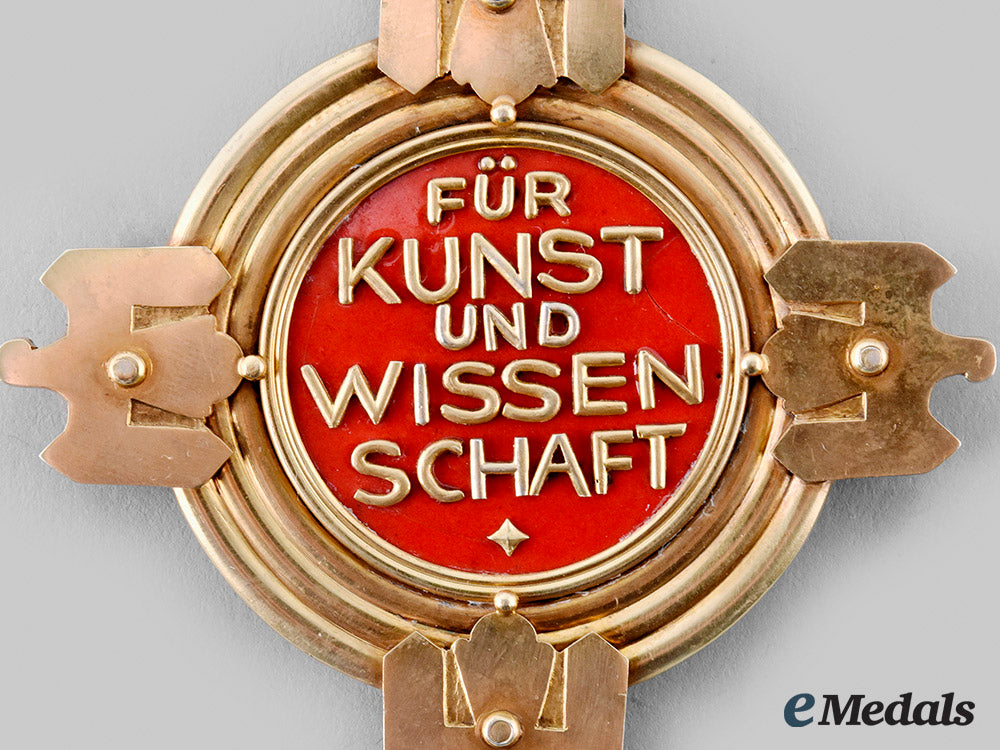
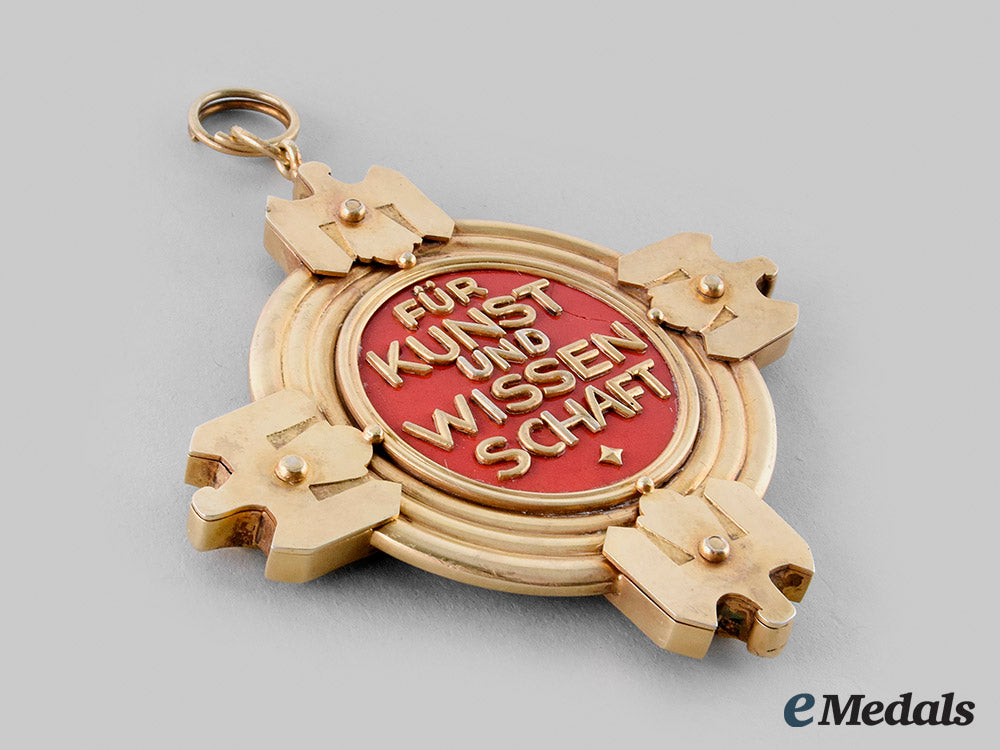
Germany, Third Reich. A Rare National Prize For Art And Science, Ii Model Prototype
Germany, Third Reich. A Rare National Prize For Art And Science, Ii Model Prototype
SKU: ITEM: G45601
Current Bid:
Your Max Bid:
Bid History:
Time Remaining:
Couldn't load pickup availability
Shipping Details
Shipping Details
eMedals offers rapid domestic and international shipping. Orders received prior to 12:00pm (EST) will be shipped on the same business day.* Orders placed on Canadian Federal holidays will be dispatched the subsequent business day. Courier tracking numbers are provided for all shipments. All items purchased from eMedals can be returned for a full monetary refund or merchandise credit, providing the criteria presented in our Terms & Conditions are met. *Please note that the addition of a COA may impact dispatch time.
Shipping Details
eMedals offers rapid domestic and international shipping. Orders received prior to 12:00pm (EST) will be shipped on the same business day.* Orders placed on Canadian Federal holidays will be dispatched the subsequent business day. Courier tracking numbers are provided for all shipments. All items purchased from eMedals can be returned for a full monetary refund or merchandise credit, providing the criteria presented in our Terms & Conditions are met. *Please note that the addition of a COA may impact dispatch time.
Description
Description
(Der Deutscher Nationalorden für Kunst und Wissenschaft, Vorlagemuster II). Instituted 30 January 1937. (1937 issue). A rare and unique prototype of the German National Prize for Art and Science, constructed of gilded silver with enamels, the obverse consisting of a circular oak leaf wreath, bordered on both sides with gilt rings, with a central red enameled disc bearing a raised gilt mobile swastika, the cardinal points adorned with raised and gilded NSDAP-style German national eagles clutching mobile swastikas, the reverse with an analogous red enameled disc bearing a raised gilt inscription of “FÜR KUNST UND WISSENSCHAFT” (“FOR ART AND SCIENCE”), with four visible rivets securing each of the obverse eagles in place, the twelve o’clock eagle’s head bearing an integral loop connecting to dual suspension rings, unmarked, measuring 81.68 mm (w) x 88.12 mm (h) (inclusive of suspension), weighing 79.4 mm grams, minor tarnishing and loss of gilt finish evident, with a crack visible to the reverse enamels, in overall near extremely fine condition.
Footnote: The German National Prize for Art and Science traces its origins to 1935, when dissident writer Carl von Ossietzky was awarded the Nobel Peace Prize for his exposé on the secret rearmament of the German armed forces during the latter stages of the Weimar Republic. Having also condemned growing anti-Semitism in Germany, von Ossietzky was arrested on 28 February 1933. Despite exerting pressure, the NSDAP was unable to prevent the Nobel Committee from awarding von Ossietzky the distinction, but was able to prevent him from travelling to Norway to accept it. He died the following year of tuberculosis while in a Berlin hospital under Gestapo surveillance. Outraged at the Nobel Committee’s perceived attack on Germany, the Führer forbade any German citizens from accepting further Nobel Prizes. Instead, the NSDAP established its own award for citizens who made outstanding contributions to the Third Reich, which became the German National Prize for Art and Science. Several prototypes of the award, including the example offered, were created before a final design was agreed upon. Nine nominees were awarded the prize for the years 1937 and 1938, one posthumously, before it was abandoned at the start of the Second World War.
Description
(Der Deutscher Nationalorden für Kunst und Wissenschaft, Vorlagemuster II). Instituted 30 January 1937. (1937 issue). A rare and unique prototype of the German National Prize for Art and Science, constructed of gilded silver with enamels, the obverse consisting of a circular oak leaf wreath, bordered on both sides with gilt rings, with a central red enameled disc bearing a raised gilt mobile swastika, the cardinal points adorned with raised and gilded NSDAP-style German national eagles clutching mobile swastikas, the reverse with an analogous red enameled disc bearing a raised gilt inscription of “FÜR KUNST UND WISSENSCHAFT” (“FOR ART AND SCIENCE”), with four visible rivets securing each of the obverse eagles in place, the twelve o’clock eagle’s head bearing an integral loop connecting to dual suspension rings, unmarked, measuring 81.68 mm (w) x 88.12 mm (h) (inclusive of suspension), weighing 79.4 mm grams, minor tarnishing and loss of gilt finish evident, with a crack visible to the reverse enamels, in overall near extremely fine condition.
Footnote: The German National Prize for Art and Science traces its origins to 1935, when dissident writer Carl von Ossietzky was awarded the Nobel Peace Prize for his exposé on the secret rearmament of the German armed forces during the latter stages of the Weimar Republic. Having also condemned growing anti-Semitism in Germany, von Ossietzky was arrested on 28 February 1933. Despite exerting pressure, the NSDAP was unable to prevent the Nobel Committee from awarding von Ossietzky the distinction, but was able to prevent him from travelling to Norway to accept it. He died the following year of tuberculosis while in a Berlin hospital under Gestapo surveillance. Outraged at the Nobel Committee’s perceived attack on Germany, the Führer forbade any German citizens from accepting further Nobel Prizes. Instead, the NSDAP established its own award for citizens who made outstanding contributions to the Third Reich, which became the German National Prize for Art and Science. Several prototypes of the award, including the example offered, were created before a final design was agreed upon. Nine nominees were awarded the prize for the years 1937 and 1938, one posthumously, before it was abandoned at the start of the Second World War.






You May Also Like
Germany, HJ. A 1938 National Trade Competition Victor’s Badge, Gold Grade in Case, By Gustav Brehmer
G60096
Italy, Republic. An Order of Merit of the Italian Republic, Grand Cross Set by Johnson, 1970
EU23677
Spain, Franco Period. An Order of Civil Merit, Grand Cross Set
EU23731
Russia, Imperial. An Order of St. Anne, II Class in Gold
EU23720
Austria, Imperial. An Order of the Iron Crown, III Class in Gold, by Rothe, c.1900
EU23723
-
Germany, HJ. A 1938 National Trade Competition Victor’s Badge, Gold Grade in Case, By Gustav Brehmer
G60096
Add to CartRegular price $3,950 USDRegular price $0 USD Sale price $3,950 USDUnit price / per -
Italy, Republic. An Order of Merit of the Italian Republic, Grand Cross Set by Johnson, 1970
EU23677
Add to CartRegular price $950 USDRegular price $0 USD Sale price $950 USDUnit price / per -
Spain, Franco Period. An Order of Civil Merit, Grand Cross Set
EU23731
Add to CartRegular price $600 USDRegular price $0 USD Sale price $600 USDUnit price / per -
Russia, Imperial. An Order of St. Anne, II Class in Gold
EU23720
Add to CartRegular price $2,950 USDRegular price $0 USD Sale price $2,950 USDUnit price / per -
Austria, Imperial. An Order of the Iron Crown, III Class in Gold, by Rothe, c.1900
EU23723
Add to CartRegular price $3,950 USDRegular price $0 USD Sale price $3,950 USDUnit price / per
Do you have a similar item you are interested in selling?
Please complete the form and our client care representatives will contact you.
Sell Item
















